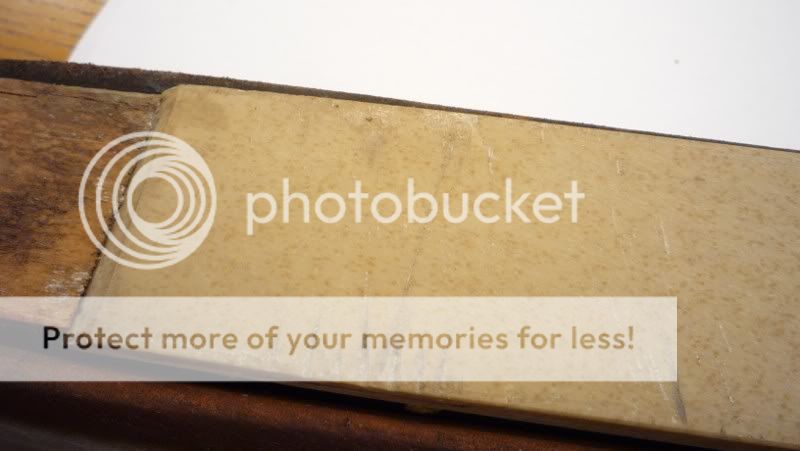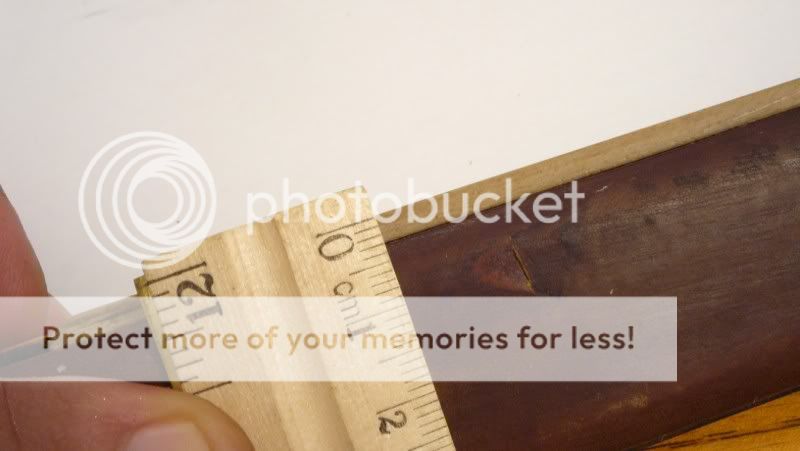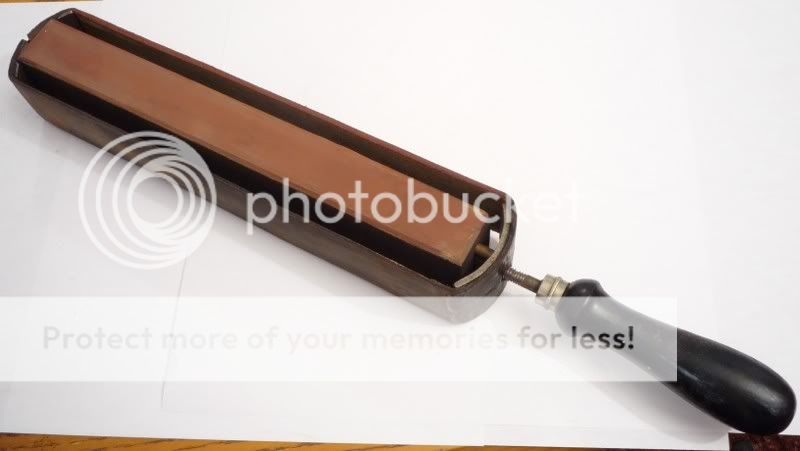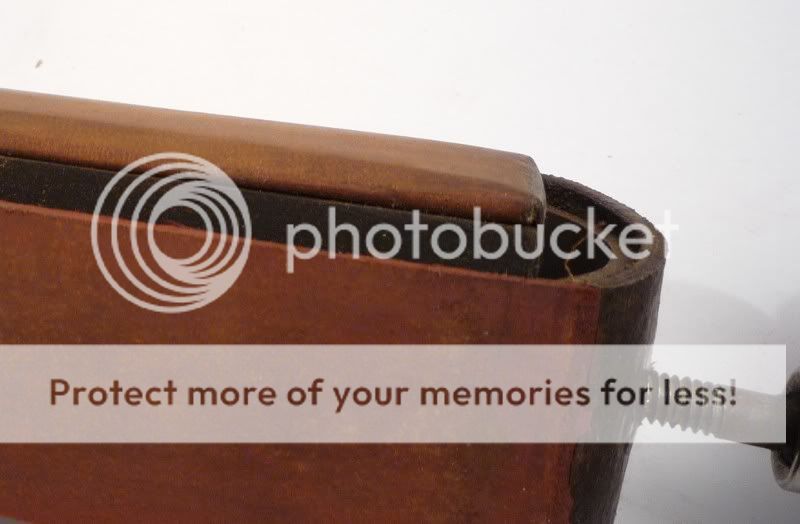Smythe
Well-Known Member
In my search on on-line auctions for strange and unusual tonsorial related items, I accidentally clicked on the BID NOW button and won an interesting item… It’s a Combination Hone and Cushion Belt Strop, manufactured by the Torrey Razor Co




What I found interesting (and puzzling) was… the bold caption above the directions…
“GENUINE OLD ROCK ITILIAN RAZOR HONE AND COUSHIONED STROP COMBINED Patented April 18 1881 and July 12 1882”

But upon delivery and inspection, I determined the “hone” was Coticule. But. “Italian Razor Hone”? I asked, did they mine Coticule in Italy… and named it Old Rock?... or was it just marketing?... Maybe the style of the product “Italian” (you know… like Italian shoes or handbags).
It’s a natural razor hone stone (believed to be Coticule) cemented to one side of a block of wood, with leather on the other 3 sides, 2 of witch are cushioned and impregnated with fine abrasive “pastes” and one of plain leather.
I believe the hone is glued to the block however if you look at the ends of the hone you will see they are beveled, and those wooden “dovetail” (if that what it is called) and small nails wedging the stone in place at both ends. No doubt these ends were originally finished with rubber or leather caps to give a neat appearance.


The stone is 165mm x 27mm (about 6 ¾ x 1 inch)… and only 3mm thick. I haven’t tested the sharpening qualities just yet, as there are a few nicks on the surface probably placed there by a previous owner (wring his neck), but I am at loathe to lap them out, instead I think I will fill the nicks for a smooth surface. However I wetted and swiped a razor over the undamaged surface for a few laps… and I must say it has a agreeable “sandy” feel (typical sound of sharpening steel), I only tested with water but so far I can say it cuts pretty fast… even its (cough… cough) Corburundun cousin was jealous.


Incidentally when I first got it there was a slight “dish” in the middle so at the time I reluctantly lapped it flat but left the deep nicks near the end as mentioned previously.
Also I suspect it may have been about 4 – 5 mm thick originally (though I cannot be absolutely sure… but cannot be much more than that because it would not fit in the paper case),
BTW I did search the patent library but never found this model… still searching.
It must have been a very short run product line; think about it… if indeed a Coticule (or any natural sharpening stone) it must have been wasteful (and expensive) cutting the blocks into thin strips… the saw blade would clain a good portion of the material… For example… Assuming each is a prefect cut (and we know how delicate those Coticules are), and assuming the saw blade 2mm wide (could be wider but we may never know) would result in four strips about 5mm each from a 30mm block (2mm left over… but the saw would claim 8mm).
If you are interested in acquiring one of these you may have a hard time. I do not believe they made many of these sharpeners with natural hones attached, but you will find many artificial types embedded on the “hone” side of the block, and sometimes bad photography will make the cushioned leather side appear yellow… I bought another 4 sided Hone-Strop combo only to discover the illusion.
Some 4 sided Hone-Strop (the ones with the mechanically stretched leather) has the hone side in a red color. I at one time thought the red was a Swaty type hone-material but now I doubt they exist. The red color hone-side it is in fact a “hone”, but it’s simply bare wood tapered at the edges (like a real hone), and the working surface coated with a red abrasive, not sure exactly, but probably an oxide of iron (rogue?).
You will want to closely examine the suspected stone for clues:
The familiar random dots with yellow “wood grain” texture (most will be a “dirty yellow” color) - The short ends are tapered but the long edges are square (based on the example I have) - It appears to be attached to the wooden base (and not part of the wood itself), then chances are it’s the genuine article… anything else is a gamble.
Here is a typical example of the type you do not want (unless for the purpose of antiquity or for the use of the strop)

Notice my finger is stained by that red powder coating the “hone” side

Notice the cushioned side looks “Cushioned” with the end flap wrapped over the side… and the tanned color that can appear Coticule-Yellow in photos. Notice also, the facing leather is coated with the same red stuff as the hone.

Hope you found this long winded article interesting... just one of few tonsorial antiquities I find interesting and thought I would share.
Have a good one folks.
CS
What I found interesting (and puzzling) was… the bold caption above the directions…
“GENUINE OLD ROCK ITILIAN RAZOR HONE AND COUSHIONED STROP COMBINED Patented April 18 1881 and July 12 1882”
But upon delivery and inspection, I determined the “hone” was Coticule. But. “Italian Razor Hone”? I asked, did they mine Coticule in Italy… and named it Old Rock?... or was it just marketing?... Maybe the style of the product “Italian” (you know… like Italian shoes or handbags).
It’s a natural razor hone stone (believed to be Coticule) cemented to one side of a block of wood, with leather on the other 3 sides, 2 of witch are cushioned and impregnated with fine abrasive “pastes” and one of plain leather.
I believe the hone is glued to the block however if you look at the ends of the hone you will see they are beveled, and those wooden “dovetail” (if that what it is called) and small nails wedging the stone in place at both ends. No doubt these ends were originally finished with rubber or leather caps to give a neat appearance.
The stone is 165mm x 27mm (about 6 ¾ x 1 inch)… and only 3mm thick. I haven’t tested the sharpening qualities just yet, as there are a few nicks on the surface probably placed there by a previous owner (wring his neck), but I am at loathe to lap them out, instead I think I will fill the nicks for a smooth surface. However I wetted and swiped a razor over the undamaged surface for a few laps… and I must say it has a agreeable “sandy” feel (typical sound of sharpening steel), I only tested with water but so far I can say it cuts pretty fast… even its (cough… cough) Corburundun cousin was jealous.


Incidentally when I first got it there was a slight “dish” in the middle so at the time I reluctantly lapped it flat but left the deep nicks near the end as mentioned previously.
Also I suspect it may have been about 4 – 5 mm thick originally (though I cannot be absolutely sure… but cannot be much more than that because it would not fit in the paper case),
BTW I did search the patent library but never found this model… still searching.
It must have been a very short run product line; think about it… if indeed a Coticule (or any natural sharpening stone) it must have been wasteful (and expensive) cutting the blocks into thin strips… the saw blade would clain a good portion of the material… For example… Assuming each is a prefect cut (and we know how delicate those Coticules are), and assuming the saw blade 2mm wide (could be wider but we may never know) would result in four strips about 5mm each from a 30mm block (2mm left over… but the saw would claim 8mm).
If you are interested in acquiring one of these you may have a hard time. I do not believe they made many of these sharpeners with natural hones attached, but you will find many artificial types embedded on the “hone” side of the block, and sometimes bad photography will make the cushioned leather side appear yellow… I bought another 4 sided Hone-Strop combo only to discover the illusion.
Some 4 sided Hone-Strop (the ones with the mechanically stretched leather) has the hone side in a red color. I at one time thought the red was a Swaty type hone-material but now I doubt they exist. The red color hone-side it is in fact a “hone”, but it’s simply bare wood tapered at the edges (like a real hone), and the working surface coated with a red abrasive, not sure exactly, but probably an oxide of iron (rogue?).
You will want to closely examine the suspected stone for clues:
The familiar random dots with yellow “wood grain” texture (most will be a “dirty yellow” color) - The short ends are tapered but the long edges are square (based on the example I have) - It appears to be attached to the wooden base (and not part of the wood itself), then chances are it’s the genuine article… anything else is a gamble.
Here is a typical example of the type you do not want (unless for the purpose of antiquity or for the use of the strop)

Notice my finger is stained by that red powder coating the “hone” side
Notice the cushioned side looks “Cushioned” with the end flap wrapped over the side… and the tanned color that can appear Coticule-Yellow in photos. Notice also, the facing leather is coated with the same red stuff as the hone.

Hope you found this long winded article interesting... just one of few tonsorial antiquities I find interesting and thought I would share.
Have a good one folks.
CS
 : Granted, I can't count the number of US citizens who think New Mexico is another country...
: Granted, I can't count the number of US citizens who think New Mexico is another country...